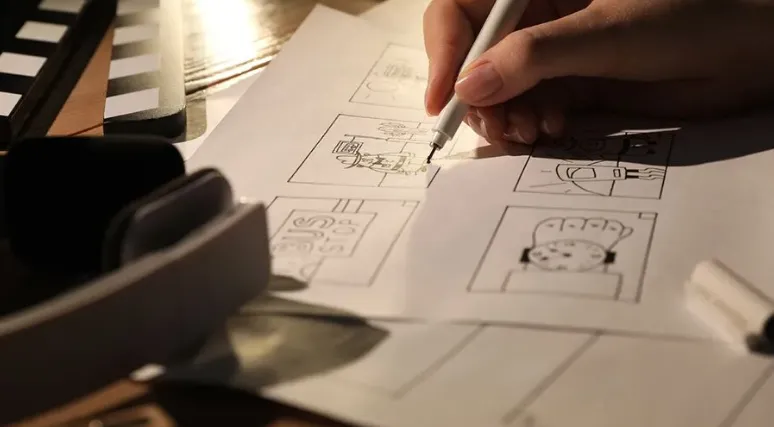
Videos are a visual representation of a concept, so it’s essential that businesses provide an accurate representation of that concept to shareholders or consumers. Plus, storyboarding ensures that everyone gets to have their ideas heard before moving onto filming.
Video Caddy (VCD) has streamlined this process over time as they worked with clients, honing it into an easy-to-follow process that delivers mesmerizing storyboards to businesses!
The fact is that without a storyboard, businesses are just winging it. There are just so many small details that can make a monumental difference in the message being delivered. A storyboard organizes all of those thoughts into an efficient filming strategy that will take a concept all of the ways to publication.
There are so many different types of videos that it should come as no surprise that the storyboarding process also has some variants. Storyboarding is like a map that provides directions for the team to arrive at the final destination.
All of the top videos in the world are put through a storyboard. With that in mind, here are some of the different types of storyboards:
This is the most basic type of storyboard where ideas are written in text with important parts highlighted, so they stand out.
Small thumbnail images are used to move the concept through various stages to portray settings and development.
This is the most complex type of storyboard and is reserved for concepts that are impossible to communicate with still images and words alone.
Digital storyboards are one of the main benefits of using a service like Video Caddy. These can easily be shared across a network.
Now it’s time to dive deeper into Video Caddy’s process for creating high-quality storyboards. This system has been honed over time by a team of experienced storyboarding artists:

Storyboarding is a process designed to organize a concept in order to provide a roadmap, so it makes sense to start by building a timeline. Video Caddy draws up a timeline that starts with the concept and takes it all the way through to the call-to-action statement.

Storyboarding is a process designed to organize a concept in order to provide a roadmap, so it makes sense to start by building a timeline. Video Caddy draws up a timeline that starts with the concept and takes it all the way through to the call-to-action statement.

Storyboarding is a process designed to organize a concept in order to provide a roadmap, so it makes sense to start by building a timeline. Video Caddy draws up a timeline that starts with the concept and takes it all the way through to the call-to-action statement.

Storyboarding is a process designed to organize a concept in order to provide a roadmap, so it makes sense to start by building a timeline. Video Caddy draws up a timeline that starts with the concept and takes it all the way through to the call-to-action statement.

Storyboarding is a process designed to organize a concept in order to provide a roadmap, so it makes sense to start by building a timeline. Video Caddy draws up a timeline that starts with the concept and takes it all the way through to the call-to-action statement.

Finally, all of the finishing touches are added to the storyboard. Cuts, transitions, and other important highlights are added. This is designed to tie everything together.
Not only the storyboard, but our illustration services can help you create unique characters reflecting your brand and messages. Video Caddy will bring your concept to life by creating breathtaking visuals that take your team through the entire process. They have the software, expertise, and infrastructure to make the storyboard process go as smoothly as possible.
Be it a storyboard for product development or a film storyboard, let the experts at Video Caddy visualize it for you.